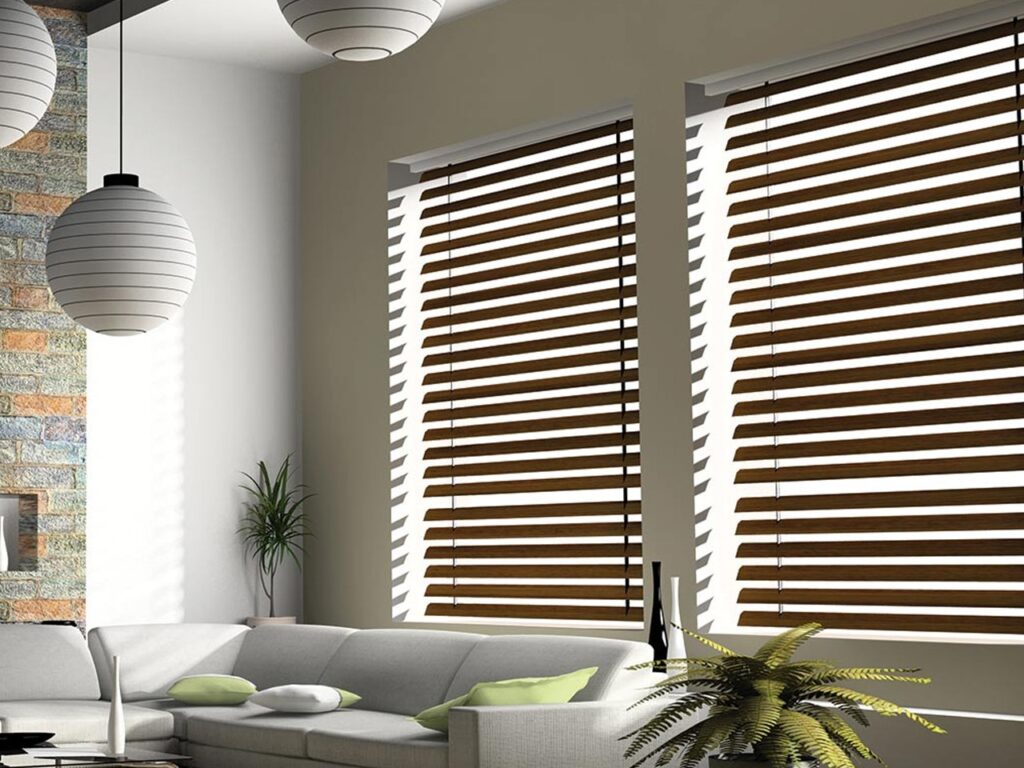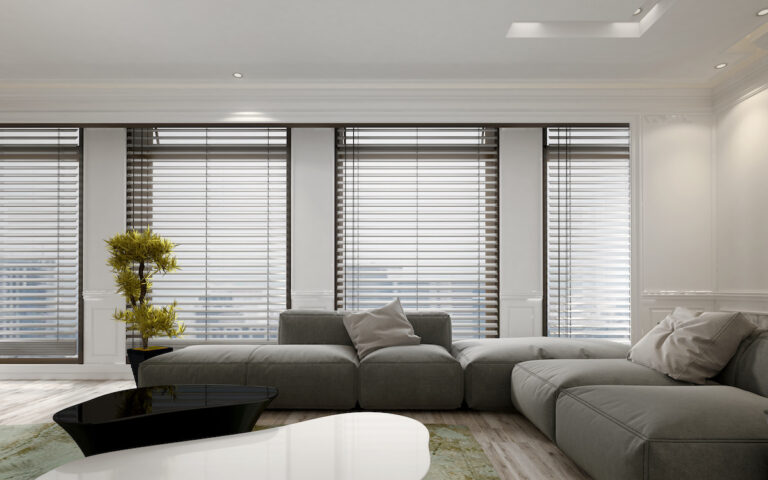The cost of blinds can differ depending on the type, material, size, and custom sorts you select. Typically, blinds can range from $10 to over $500 per window, and the variety of types gives you a range of functionality, style, and durability. Here’s a comprehensive guide to the different types of blinds and what factors influence their costs.
Types of Blinds
Each type of blind comes with its unique look, material, and functionality. Here’s a breakdown:
Venetian Blinds:
Venetian blinds are a common, classic choice. They have flat slats that can be leaning to control light and confidentiality. They are frequently made from aluminium, wood, or plastic.
Cost:
Wood Venetians can cost between $30 and $200 per window, while aluminium and plastic versions are typically more affordable, around $10-$50 per window.
Pros:
Everlasting, easy to clean, and suggests exceptional light control.
Cons:
Wooden Venetians can be costly and require regular maintenance to avoid warping.
Vertical Blinds:
These blinds are made of vertical boards that can be replaced or drawn to one side. They’re perfect for sliding glass doors or large windows.
Cost:
Between $20 and $200 per window, depending on material and size.
Pros:
Great for large windows, it provides ample control over light and privacy.
Cons:
It can be noisy in the wind and appear outdated in some settings.
Roller Blinds:
Roller blinds are made of a single piece of fabric that rolls up and down using a cord mechanism. They come in several materials, including blackout choices.
Cost:
Basic models can start as low as $10-$30, while custom blackout or motorized versions can reach $100-$300.
Pros:
Simple, modern, and available in a range of patterns and colours.
Cons:
Limited light control compared to slatted blinds.
Roman Blinds:
Roman blinds are fabric blinds that fold up in sections, creating a pleated look when raised.
Cost:
Typically, it ranges from $30 to $150 per window, depending on fabric and lining.
Pros:
Elegant and decorative, it is suitable for living rooms and bedrooms.
Cons:
It is not ideal for humid areas like bathrooms, as the fabric can absorb moisture.

Panel Blinds:
Panel blinds are perfect for large windows or sliding doors and feature varied fabric panels that glide along a track.
Cost:
Depending on size and fabric choice, it can vary from $40 to $200.
Pros:
Trendy for large spaces, it proposes space and light control.
Cons:
Not suitable for smaller windows.
Pleated Blinds:
Like cellular blinds without the honeycomb structure, pleated blinds consist of a single layer of pleated fabric.
Cost:
Range from $20 to $150, depending on fabric and style.
Pros:
Lightweight, less bulky, and easy to install.
Cons:
Limited insulation properties compared to cellular blinds.
Mini Blinds:
Mini blinds are a smaller, more compact version of Venetian blinds with narrower slats.
Cost:
Generally affordable, starting from $10 to $50.
Pros:
Budget-friendly and suitable for small windows.
Cons:
It can be more interesting to clean due to thin slats.
Factors Affecting the Cost of Blinds
Material:
Wood and speciality fabrics are generally more expensive, while aluminium and plastic are more budget-friendly.
Customisation:
Customised blinds, especially motorised or remote-controlled, will significantly increase prices.
Size of Window:
Larger windows require more material and may require special design considerations.
Installation Costs:
Professional installation can cost $50 to $100 per window. Companies often offer bulk discounts if you install multiple blinds.
Additional Features:
Motorisation, smart-home compatibility, and cordless designs can add to the price.
Choosing the Right Type of Blinds for Your Space
When choosing blinds, consider factors like the room’s use, humidity levels, and your style preferences:
For Living Rooms:
Venetian, Roman, and roller blinds are popular due to their stylish look and functionality.
For Bedrooms:
Blackout roller or Roman blinds are ideal for blocking light, while cellular blinds add insulation.
For Kitchens/Bathrooms:
Moisture-resistant options like aluminium Venetians or vinyl roller blinds work well.
For Energy Efficiency:
Cellular blinds are best for temperature control.
Maintenance and Longevity of Blinds
- Venetian and Mini Blinds: Dusting or wiping with a damp cloth.
- Roller and Roman Blinds: Vacuuming fabric with a brush attachment.
- Vertical and Panel Blinds: Wipe with a damp cloth or use a vacuum brush for fabric panels.
- Cellular and Pleated Blinds: Use a vacuum brush to remove dust, as they’re more delicate.
Conclusion:
Depending on the types of blinds you choose, blinds offer a range of benefits, including privacy, light control, and even energy efficiency. The cost can vary widely, so it’s important to consider each room’s specific needs, budget, and desired aesthetic when selecting blinds. With the right choice, blinds can be a stylish and functional addition to your home for years.

